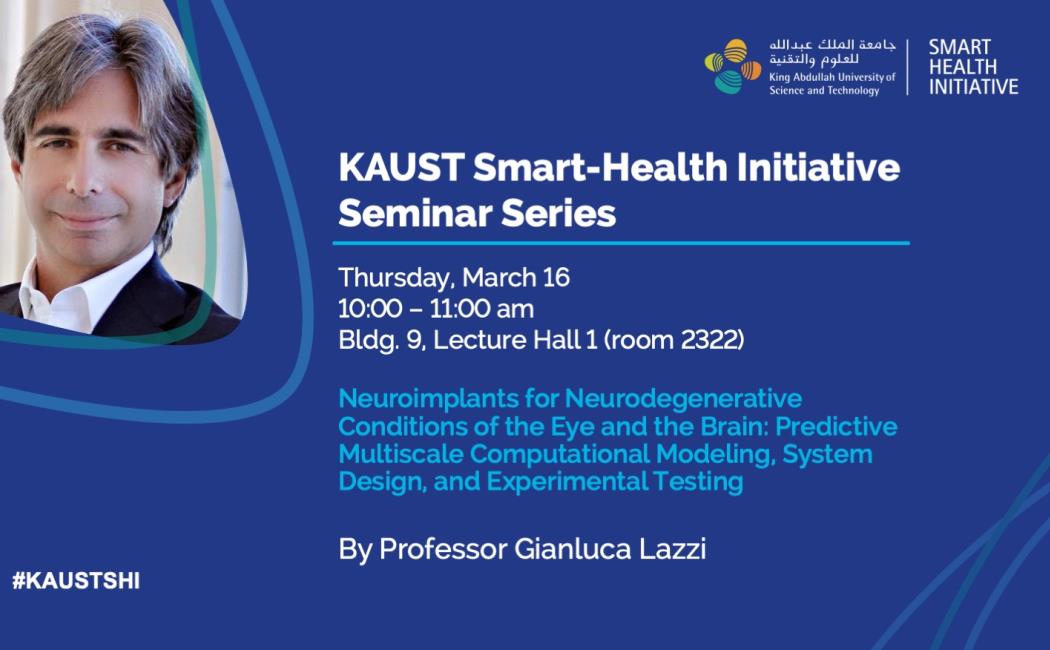
KSHI Seminar: Neuroimplants for Neurodegenerative Conditions of the Eye and the Brain: Predictive Multiscale Computational Modeling, System Design, and Experimental Testing
Please join us for the next KAUST Smart-Health Initiative (KSHI) seminar:
Neuroimplants for Neurodegenerative Conditions of the Eye and the Brain: Predictive Multiscale Computational Modeling, System Design, and Experimental Testing
By Professor Gianluca Lazzi, University of Southern California, US
Abstract
Although technical challenges are still daunting, the clinical utility of neuroprosthetics has increased dramatically over the past few years. This has been accomplished through the convergence of numerous disciplines, which have individually added fundamental understanding/capabilities to systems that interface with the human body to restore senses and movement; or treat prevalent diseases that have currently no foreseeable cure. Among these, predictive multiscale computational modeling methods have greatly aided in the design of neuroprosthetics by embracing the complexity of the nervous system, which span multiple spatial scales, temporal scales, and disciplines. In this talk, we will cover some of the recent advances in bioelectromagnetic systems for healthcare, with a particular focus on visual and hippocampal prosthesis, peripheral neuroprosthetics, and sensors.
About the speaker
Gianluca Lazzi, Ph.D. MBA is a Provost Professor of Ophthalmology, Electrical Engineering, Clinical Entrepreneurship and Biomedical Engineering at the University of Southern California (USC) where he is also the holder of the Fred H. Cole Professorship and the Director of the Institute for Technology and Medical Systems (ITEMS), a joint initiative of the Keck School of Medicine and the Viterbi School of Engineering. His expertise is in antenna design, medical applications of electromagnetics, implantable devices, neuroengineering, wireless telemetry, and liquid metal sensors. He is a Fellow of the IEEE, a Fellow of the American Institute for Medical and Biological Engineering (AIMBE), and a Fellow of the National Academy of Inventors (NAI). He co-founded Teveri, Inc., which is focused on the commercialization of stretchable conductive liquid metal-based fibers knitted in clothing and athletic apparel to bring seamless biometric, sensing and illumination solutions to smart clothing as well as stretchable electronic systems for medical, consumer, and military applications. He was the 2022 President of the IEEE Antennas and Propagation Society.
